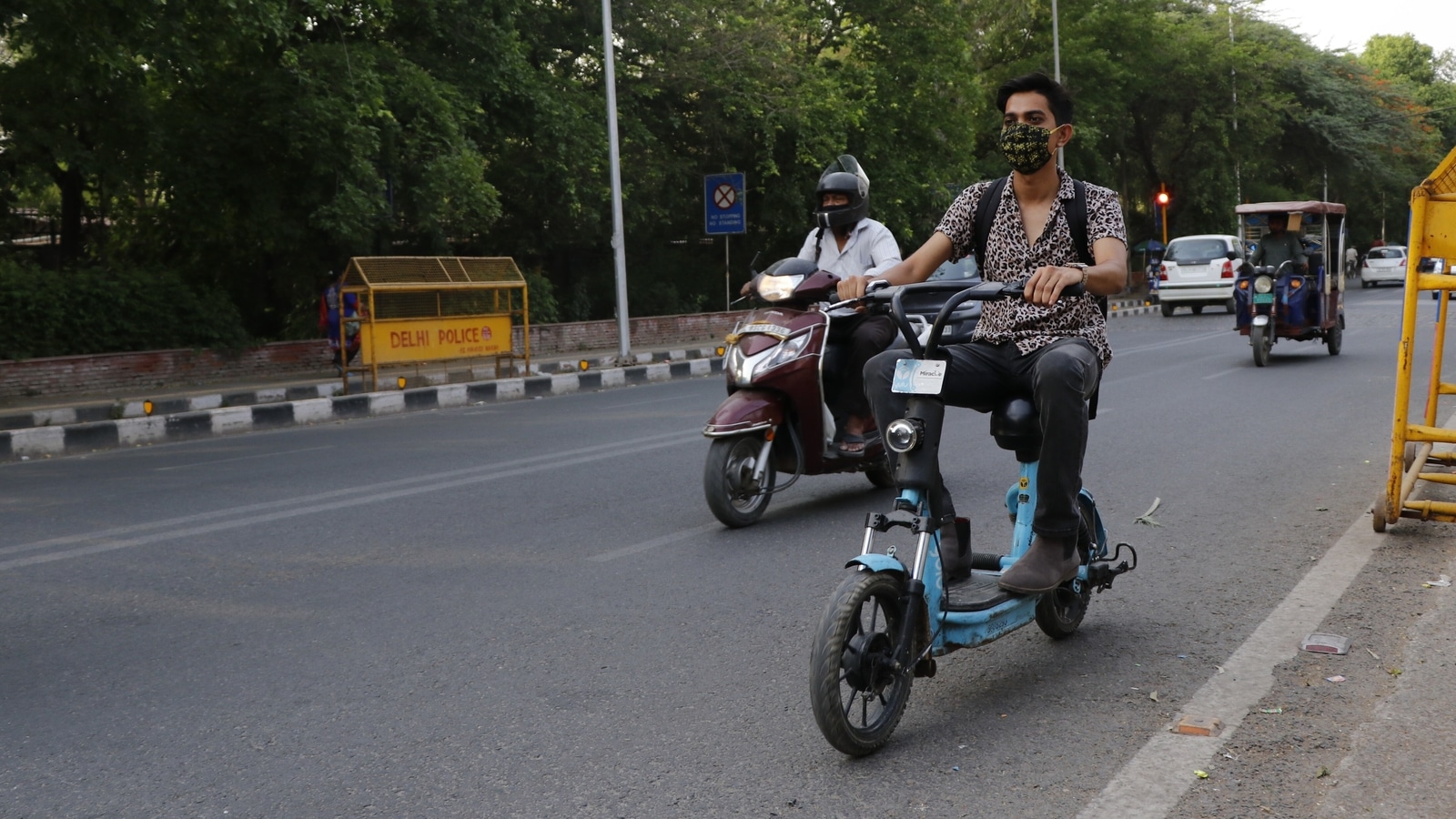How to make a city safer for e-Bikes? Think infrastructure
E-bikes are a powerful tool for lowering carbon emissions — boosting adoption is mostly dependent on offering riders protected bike lanes to enhance safety.
The invasion of Ukraine has put the US and Europe on a wartime mission to abandon Russian fossil fuels. This series looks at speeding up zero-carbon alternatives by lowering political and financial barriers.
Electric bicycle use has been booming in the US over the last two years. Demand surged during the early days of the pandemic as people looked for new ways to travel safely and again this spring as rising fuel prices sent commuters looking for cheaper alternatives. Policymakers searching for ways to reduce demand for fossil fuels in the wake of Russia’s invasion of Ukraine might also find e-bikes handy.
With battery-powered motors that assist riders as they pedal, e-bikes enable a broader range of people to make more and longer trips than traditional bikes. And they are cheaper, more efficient, and less resource-intensive to manufacture than electric cars. (The battery pack of a GMC Hummer EV is about 350 times heavier than a typical e-bike battery.) The combination of utility and efficiency makes e-bikes a powerful tool for lowering emissions.
One recent study found that boosting e-bike use to account for 15% of miles traveled per person annually in Portland would reduce carbon dioxide emissions from passenger transportation in the city by 12%. A single e-bike, according to the study, would yield an average reduction of 225 kilograms of CO2 per year — enough to shave more than a percent from the per capita emissions of the average US citizen.
There is no great mystery in how to get more people to ride e-bikes (as well as traditional bikes). Rebates and other incentives can help, but even making e-bikes free wouldn’t be enough to get people to ride them on streets where they don’t feel safe. In polling commissioned by the advocacy group PeopleforBikes in 2018, nearly 70% of respondents across eight U.S. cities said that roads are not safe enough for families to bike and, of those, 63% said they would ride if they felt safer. The best way to make riders safer is to protect them from cars.
In city after city, when protected bike lanes are added to roadways, ridership increases. In Philadelphia, for instance, a study of new bikes lanes on a pair of main thoroughfares in 2018 found that the number of riders nearly doubled. Other places can count on similar outcomes, says Christopher Cherry, a professor in the department of civil and environmental engineering at the University of Tennessee at Knoxville, so long as they build bike lanes that connect the places where people live with where they work and shop. “It has to be part of a bigger network,” says Cherry.
Fortunately, thanks to decades of spending on road and highway building, the infrastructure needed to create these networks already exists. Cities don’t need to pour asphalt; they just need to commandeer some of the surplus of streets from cars. “We have so much redundancy in our car-based transportation network,” says Cherry, “the ability to quickly reallocate road space is very low-hanging fruit.” All it takes is concrete barriers, hefty planters, metal bollards, rows of parked cars or some other sturdy boundary between bikes and cars. In most cases, paint is not enough. Recent studies suggest that bike lanes without barriers not only do not make riders safer but can make matters worse.
In five U.S. cities that have collectively installed more than 335 miles of bike lanes since 2019 — Austin, Texas; Denver; New Orleans; Pittsburgh; and Providence, Rhode Island — the average cost to add lanes was about $290,000 per mile, according to Sara Studdard, co-founder of the nonprofit consultancy City Thread. In her previous job at PeopleforBikes, Studdard helped to advocate for the rapid expansion of these networks. All together the five cities each spent about $100 million—a tiny fraction of the $200 billion that state and local governments spend annually on highways and roads—to make major gains in their bike infrastructure.
Many cities already have plans in hand for hundreds of bike lane miles, says Kyle Wagenschutz, a co-founder at City Thread, but have completed less than a quarter of what’s outlined. While city budgets often allow for more — and bike lanes pay dividends in improved public safety and higher real estate values — the expansion of bike infrastructure in the US tends to be painfully slow. The average federally-funded project, according to Wagenschutz, takes nearly a decade to finish. “And those projects are disconnected from each other,” he says. “You might build a little bit of a bike lane here, a little bit of a trail there, but they don’t really come together.”
It does not have to be this way. Polling shows that a solid majority of Americans, spanning wide regions and demographics, support more funding for biking and pedestrian infrastructure. And voters in many places favor adding protected bike lanes. The problem is that these projects are a rarely a high priority. When loud minorities protest — and few things inspire more NIMBY rage than lost street parking — city leaders give in to demands for superfluous feasibility studies and to chip away at the scope plans.
“The end result is always a watered-down mishmash,” says Wagenschutz, “And then we begin the cycle all over again with the next project.” Better to go big, Wagenschutz advises, and to “build bicycle networks as the project.”
For all the latest Technology News Click Here

